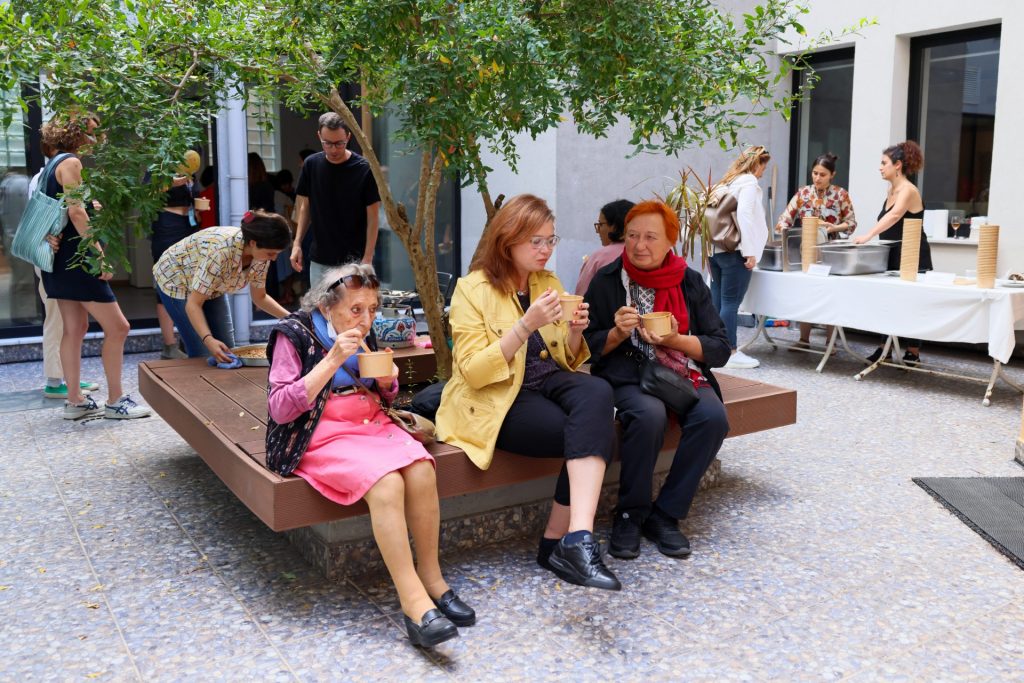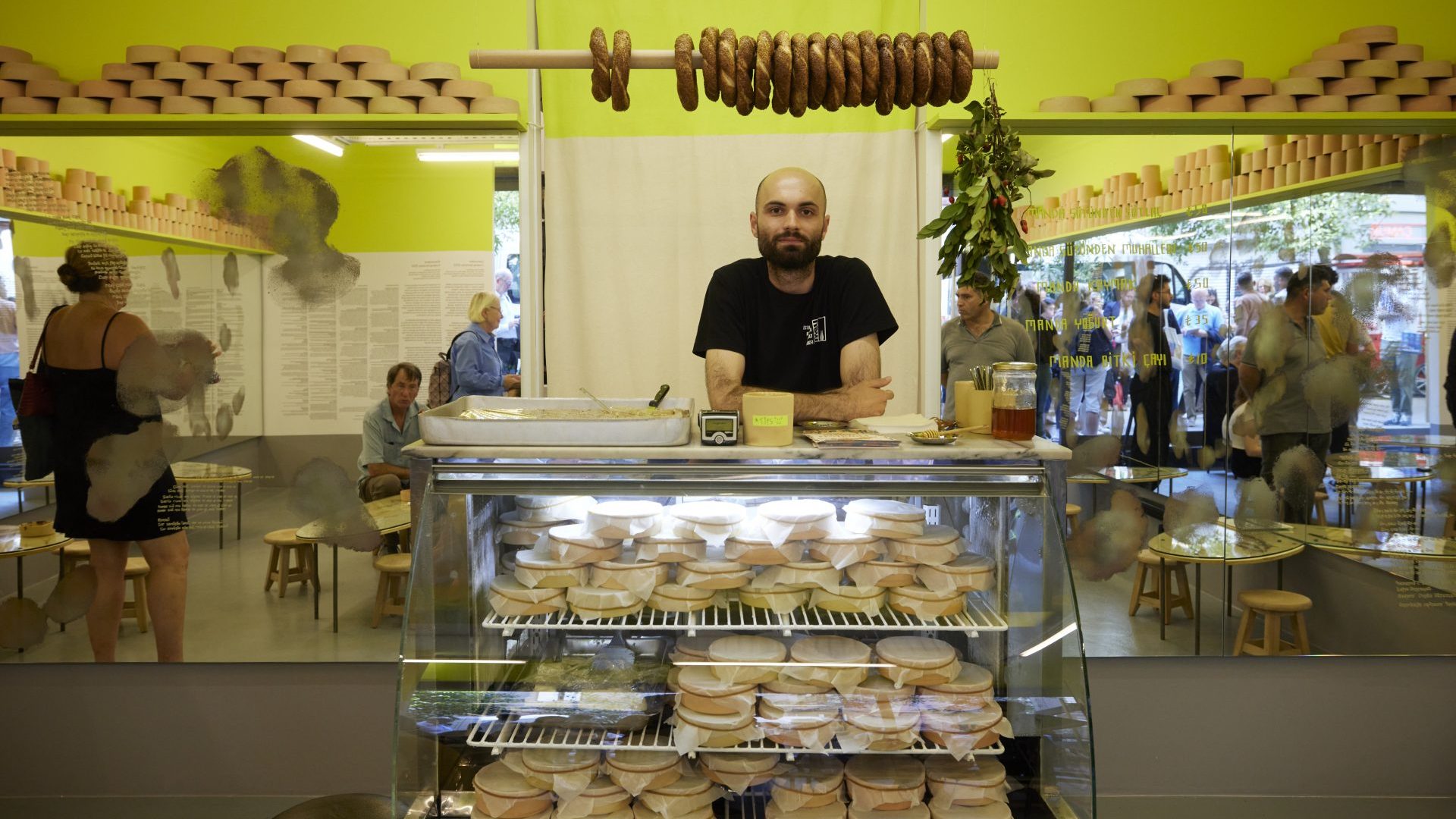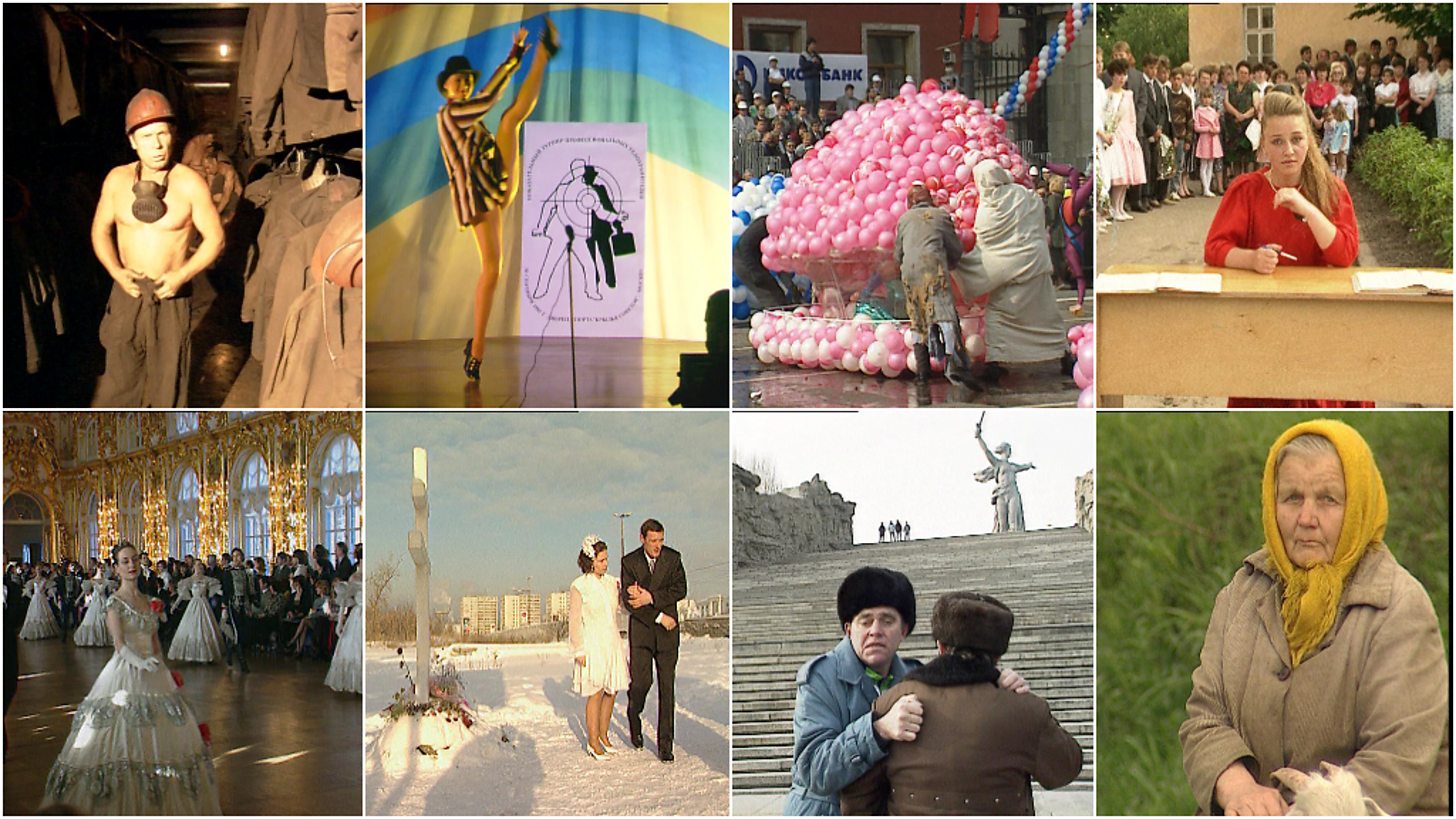The story goes that in 17th-century Germany, dumplings called maultaschen were invented during Lent as a way of concealing meat from God’s all-seeing eyes. In Turkey today, people are concerned more with the prying eyes of the state than of God, and dumplings – manti in Turkish – have once again become a means and a metaphor for smuggling forbidden cargo past the authorities.
Published as part of the 2022 edition of the Istanbul Biennial, a newspaper called Dumpling Post keeps alive the spirit of resistance that inspired the
2019 Kayseri dumpling festival, organised in response to the repeated banning of a conference on the social, cultural and economic history of the
city. To celebrate the publication of the first of three issues, the Hrant Dink
Foundation (HDF) hosted a reception in the opening week of the Biennial, a
convivial affair at which manti were cooked under the shade of a pomegranate tree for a courtyard full of supporters, journalists and VIPs.
The foundation, which has its headquarters on a quiet street in the Şişli district of Istanbul’s European side, was established in 2007 following the assassination by a Turkish nationalist of the journalist Hrant Dink, founder editor of the Turkish-Armenian weekly newspaper Agos. It aims to continue the journalist’s work, furthering the causes of democracy in Turkey, and fostering cultural relations between Turkey, Armenia and Europe.
To this end, the HDF organises international conferences “aiming to expand the understanding of the social, economic, socio-political and cultural changes experienced in different cities of Anatolia in the 19th and 20th centuries”. Events held in cities including Ankara and İzmir were due to be followed by a conference in Kayseri, scheduled for October 2019, but it was banned by the local government. Transferred to the HDF headquarters in Istanbul, again the event was banned, just one day before it was due to take place.
Writing in issue one of the Dumpling Post, which is distributed free during
the Biennial and available online, the journalist Ayla Jean Yackley describes
how the traditional dumplings of Kayseri offered a key to a different way to talk about the city. Instead of a conference, they alighted on the Kayseri dumpling festival – wrapping the forbidden inside an innocuous-looking parcel, just as the monks in 17th-century Germany had done.
Still, there was nothing bogus about the event. Writing in the Post, wine expert Levon Bağiş recalls the police arriving: “I will never forget the look
of surprise on their faces when they came inside, only to see women busily
making manti on the tables. Our conversation with the police commander, which had started at a very high pitch, ended with a plate of manti in his hand that he said was better than the manti his wife from Kayseri made.”
What the police commander had lost sight of was exactly the inspiration for the festival: that manti-making is a communal activity, its repetitive actions the natural accompaniment to conversation.
After seven frenetic days of planning and organisation, the festival attracted
500 people. Yackley writes: “They came not just to make dumplings, eat, and listen to speeches, but to show solidarity with us and to take a stance against the restrictions imposed on civil society.”
The Dumpling Post, which is a dual-language publication in English and Turkish, is a gauge of the sharp political edge to the 17th edition of the Istanbul Biennial. In previous years, it centred on large public settings, and
though major institutions such as the Pera Museum are involved this time round, exhibitions are dispersed across the city, with a focus on smaller, more intimate locations. There is a distinctly dissenting flavour. The comforting aromas of food waft through this year’s programme, an evocation of home, hearth and tradition that implies not only the strength that comes from family bonds, but the empowerment of women and children.

London-based artist duo Cooking Sections have made a long-term project from the exploration of culture, customs and precious environments embodied in food, and specifically the complex relationship between food and the climate crisis. From a little shop in Beyoğlu they served traditional Turkish puddings made with buffalo milk including kaymak (a very thick cream made from buffalo milk), and sütlaç (rice pudding). The shop is part of Wallowland, a project commissioned by the Biennial to highlight the plight of Istanbul’s water buffaloes, under threat from the loss of wetlands in the area now dominated by the city’s new airport, one of the more bombastic vanity projects commissioned by the president, Recep Tayyip Erdoğan.
Last held in 2019 and delayed by a year due to the pandemic, the Biennial
appears to be considerably more outspoken than it was three years ago and, to the eyes of an outsider, conditions in the city appear to have improved in the intervening years.
On the one hand, Erdoğan’s creeping desecularisation is blatantly evident in
projects such as the vast new mosque on Taksim Square. But facing it is the
equally symbolic Atatürk cultural centre, reopened in 2021 and a bulwark of secularism and free thinking in this increasingly religious state.
The election in 2019 of a left-wing mayor in Istanbul, Ekrem İmamoğlu, brought to a close a period of intense political wrangling, and seemed to constitute a promise of better times ahead. Three years ago, riot vehicles
stood in Taksim Square with their engines permanently running, manned by heavily muscled personnel, barely able to restrain the slavering Alsatians at their sides. In 2022, the police maintain their constant presence, but the black armoured trucks are gone, and the dogs, for now, are back in their kennels.
In reality, it seems that Taksim Square is no less frightening than it was before. The Indonesian activist and performance artist Arahmaiani has produced an iteration of her Flag Project for the Biennial, which was brought out for a procession through the grounds of the Gashouse Museum. It all looked very liberal, but one onlooker observed that despite using only the stock lexicon of protest – “Equality”, “Justice”, “Struggle” – the gathering would have resulted in violence and mass arrests had it occurred in Taksim Square.
Beyond the vastness of Taksim Square and its ever increasing quota of brand-new hotel blocks, Istanbul is a city of remarkable intricacy, its networks of tiny streets bordered by haphazard arrangements of impossibly fragile, impossibly ancient-looking houses patched up with gaffer tape and other eccentric materials. So narrow they might have been built for the city’s cats, not its people, such streets when nominally passable are often set at gradients extreme enough to test driver and engine alike, their hidden corners beyond the reach of even the most knowledgeable locals.
On one such street in the ancient Fatih district, a fishmonger had set up outside his shop, chopping the heads off fish under the watchful gaze of a
cat. Opposite him, a small door at the bottom of a flight of steps nestled out
of sight. Once inside the Küçük Mustafa Paşa Hammam, a Turkish bath dating from the 15th century, the space assumes the proportions of a
church, with smaller rooms radiating around large central spaces, the
facilities for men and women kept entirely separate. The hammam was abandoned for many years but now restored, this ancient, hidden place
feels intensely meaningful as part of the Biennial, for which it hosts a
sound installation. Private, but communal, it is a place of quiet resistance in the city’s very foundations.
A very different sort of communal spirit reigns over the Bread and Puppet Theatre, though as the name implies, the breaking of bread is key to the philosophy of the veteran outfit, one of the oldest not-for-profit political theatre companies in the US.
Operating from a farm in Vermont since the 1970s, Bread and Puppet Theatre was founded on New York City’s Lower East Side in 1963 by Peter
Schumann, “based on bread baking and the not-for-sale distribution of
bread at moments created by art”. They took part in anti-Vietnam war protests in the 1960s, and have continued to produce theatre that takes to the streets as much as it invites people inside. With titles like Our Domestic Resurrection Circus, Leaf Feeling the Moonlight and Wounds of Vietnam, they fall somewhere between carnival, happening and peace protest, urging action with an unhinged if entirely sane sense of purpose.
In the golden light of a late September afternoon, an assortment of banner-twirling teenagers and bizarre creatures fashioned from dustbin lids, papier mâché and old clothes milled around on the grass outside Istanbul Bilgi University. Among them was John Bell, a theatre historian and puppeteer who started working with Bread and Puppet Theatre in the 1970s. Between
practising his trombone and checking that the many performers, old and
young, were ready for the evening’s performance, he told me that Demons
of Society had been put together in just two weeks. Devised in collaboration with the university and Turkish puppetmaster Cengiz Özek, the performers were drawn from the local community. “We came expecting to work with 25, and about 65 turned up”, said Bell, before he was called away by his long-term colleague Clare Dolan, who arrived on stilts, along with a stilt-wearing protégé.
For all its trippy impenetrability, the performance itself, coyly described as
“speaking to the urgencies of the present moment”, was paradoxically bold in its uncompromising rejection of curbs on freedom. There was a trombone, and something that seemed to be part-plunger, and something else made from a bent cake tin. “Be Careful!” read one banner, “I’m Beautiful!” read another. It was crazy, joyous and completely unequivocal:
when people are silenced, they find other ways to speak.
The 17th Istanbul Biennial runs until November 20
Florence Hallett is a freelance art writer and critic




